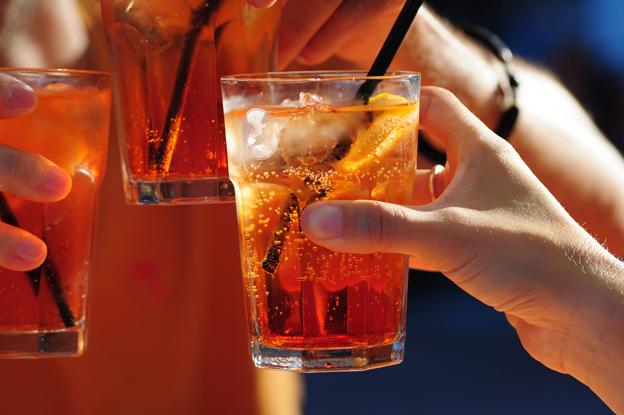I remember the first time my best friend at University suggested to go for an aperitif. I thought it would have been a simple affair of a drink with perhaps a few peanuts or crisps; what I certainly did not expect was a big buffet of cold meat, cheese, focacce, mini-sandwiches, and pizzette.
I believe that every Italian loves to go for an 'aperitivo' at any time of the year. But in the summer, it becomes even more pleasant as one can sit outdoors, in a square or a balcony, looking at the world go by while catching up with friends.
Aperitivo is traditionally that moment that precedes the meal, be it lunch or dinner, and that is meant simply to tantalize your taste buds rather than filling you up – as the word in fact suggests (it comes from the latin aperitivu(m) meaning ‘which opens up'), it should only 'open' your stomach.
It is probably comparable to the Spanish tapas where alcohol is not drunk on its own but is accompanied by a series of nibbles, stuzzichini, to help absorb the drink.

It always amused me to see foreigners glancing with curiosity at the buffet where locals keep filling up their little plates not knowing whether they can do that too or whether they would be presented with a hefty bill at the end of the evening.
In many bars around the country, especially in Milan and Turin where the aperitivo has its roots, these so-called stuzzichini on the buffet are so many and varied that one could perfectly dine on them and skip supper all together. In fact, this is now so popular that they have come up with a name for it: apericena.

The Romans stimulated their appetite with mulsum, wine and honey. But it is in Turin that 'aperitivo' as we know it today developed. In Piedmont's capital in 1786, Antonio Carpano started producing Vermouth, an aromatized white wine made with a combination of spices and herbs. It immediately became very popular all over Italy, becoming the king of aperitivo, which started to indicate both the drink itself and the social moment where everything stops to relax after work.
The most popular drink at the moment is probably “Spritz”, meaning splash or sparkling in German. It combines prosecco, a dash of Aperol or Campari, and sparkling water and is served with a slice of orange, which adds a little bitterness and colour.

During my time at the University in Siena, nobody drank Spritz though, but had a very "Sienese" cocktail called Conca D’Oro instead, from the name of the Nannini shop at the end of the main walking road in town where it was created, a blend of prosecco, grapefruit juice and Aperol.
Whatever drink you prepare for your aperitif, the rule is that it should not be too strong and always accompanied with little bites of whatever you fancy. Looking at my watch, it is exactly 6 o’clock, so I’m afraid I will leave you here and go to prepare an aperitivo to enjoy in the garden!








